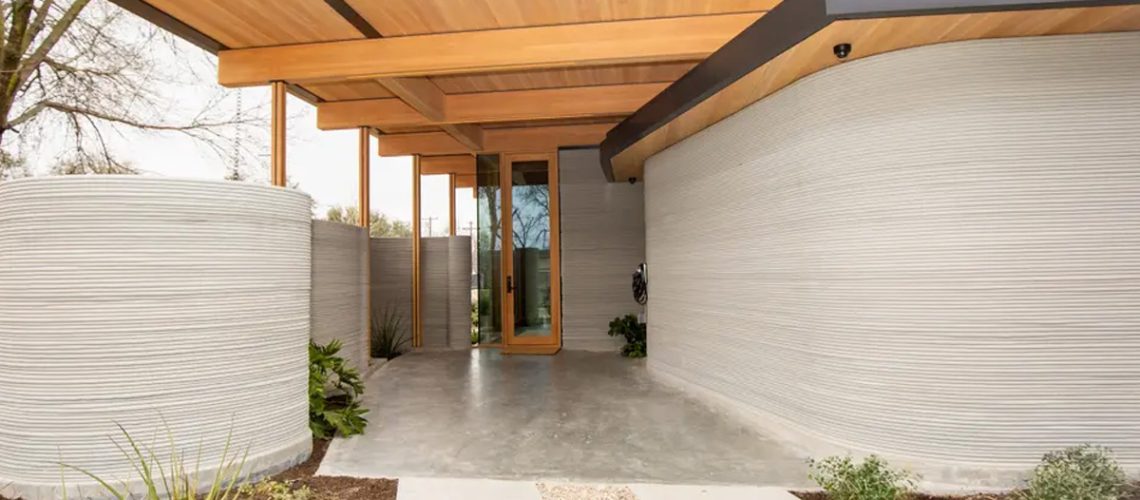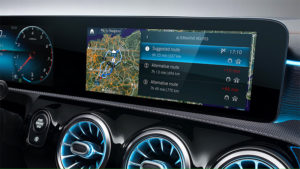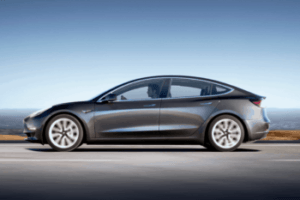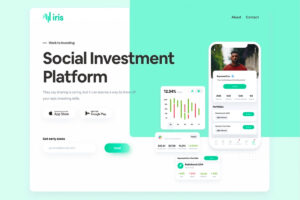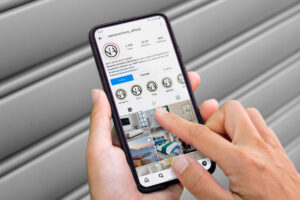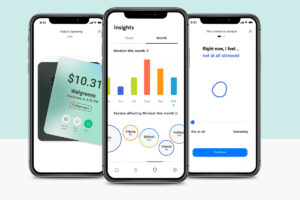What Made Me Curious About 3D-Printed Homes?
I started hearing more about 3D-printed homes and wanted to get a better sense of whether they were actually catching on. Were people seriously considering them? Or were they just a niche experiment?
I didn’t go as deep as I usually like in terms of data analysis, but I checked out some existing threads and created some of my own. (e.g. Reddit discussions, Hacker News threads), as well as gathered some publicly available data such as YouTube comments, and some website traffic data from real estate platforms to see what people were saying.
I was interviewing with ICON and wanted to get a better understanding to get some ideas of what the work could mean. I always like doing my research before considering joining a company, in the same way I’d do if I were to open up a company of my own.
From what I found, the conversation around 3D-printed homes seems to revolve around a few key factors: cost, speed, and durability.
I recently had a startup in the bathroom renovation space, so this was my first deep dive into the construction space (quite different but still closer than what I’ve done before in tech & auto).
Here’s a breakdown of what stood out to me.
How Do 3D-Printed Homes Compare to Traditional Homes?
One of the biggest questions I had going in was: How do 3D-printed homes actually stack up against traditional homes? From what I gathered, there are a few notable advantages, but also some challenges.
1. They Can Be More Affordable
One of the main selling points of ICON’s 3D-printed homes is cost. By printing the walls of a house using their Vulcan printer, a lot of labor-intensive steps are removed, which helps bring costs down. That said, while the structure itself may be cheaper, other parts of the home—like wiring, plumbing, and finishes—still cost about the same as in a traditional home. So, while there are savings, it’s not as drastic as some headlines might suggest.
2. They Are Built Faster
From what I found, 3D-printed homes can go up much quicker than traditional houses. Some reports say the printing process itself can take 24-48 hours, but it’s important to remember that’s just for the structural shell. The rest of the home—installing doors, windows, electrical, and plumbing—still takes time. So while the overall timeline is shorter than traditional construction, it’s not an instant process.
3. They Generate Less Waste
A lot of construction waste comes from materials that get cut down and discarded. Since 3D-printing homes uses only the material needed, there’s significantly less waste. ICON uses a concrete-based mix called Lavacrete, which is designed to be stronger and more durable than traditional concrete.
Are People Actually Interested in 3D-Printed Homes?
I found some interesting discussions online about whether people would actually buy a 3D-printed home. On Reddit and Hacker News, some people seemed really excited about the idea, while others were more skeptical. A few things that stood out:
- People liked the idea of lower costs, but wanted to see more real-world examples before committing.
- Durability was a common concern—some worried about how these homes would hold up long-term, especially in extreme weather.
- Questions about financing—since 3D-printed homes are still relatively new, some wondered how banks and mortgage lenders would handle them.
It seemed like there’s genuine curiosity, but also a lot of open questions that still need to be answered.
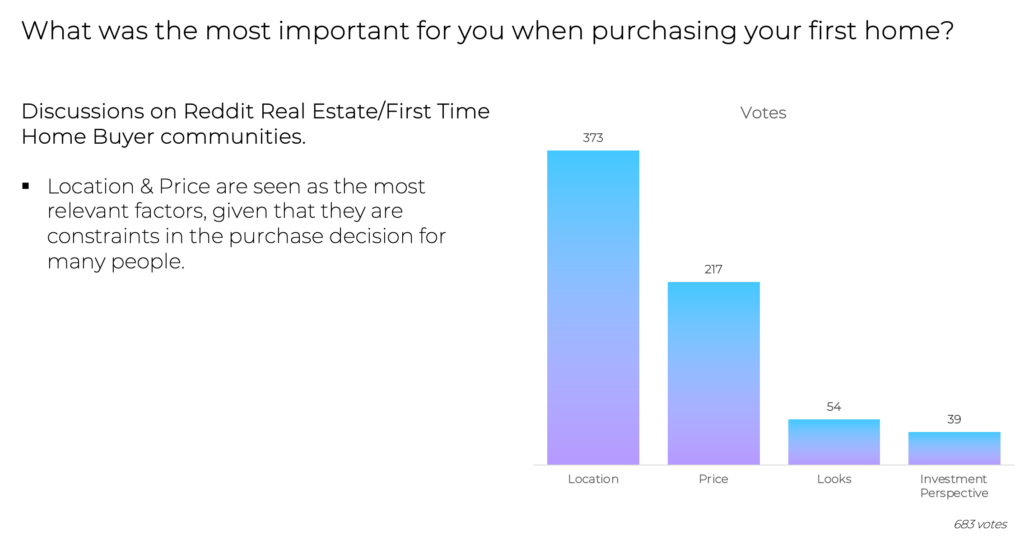
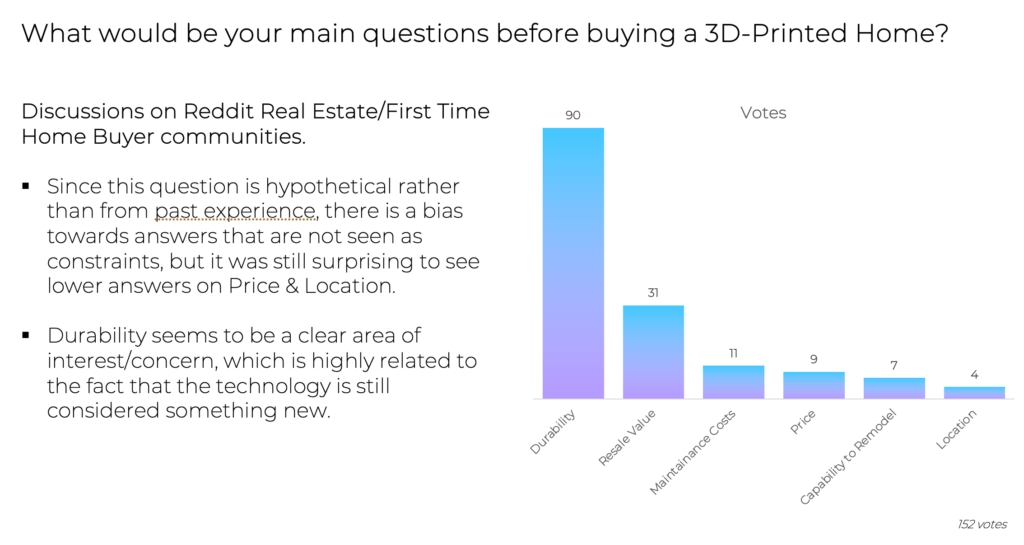
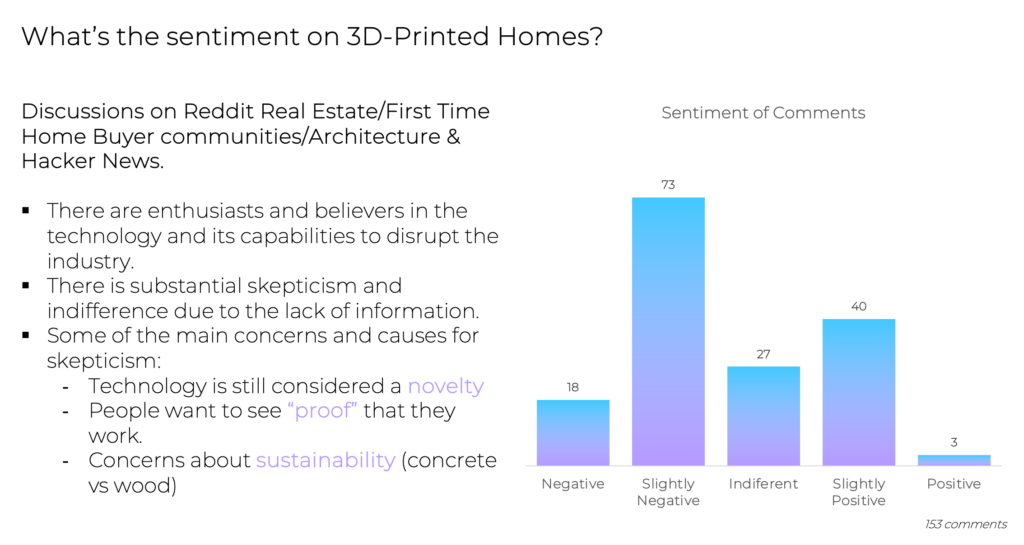
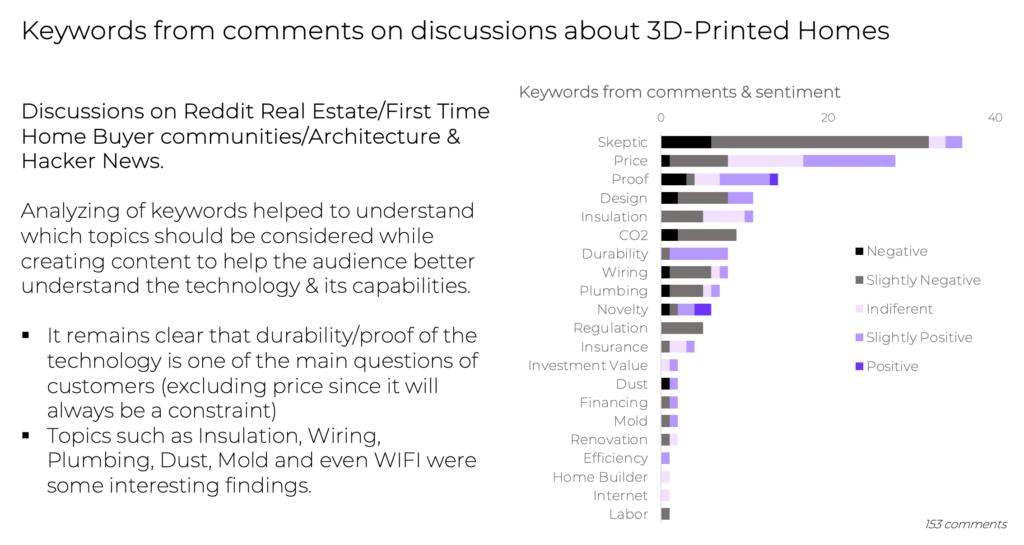
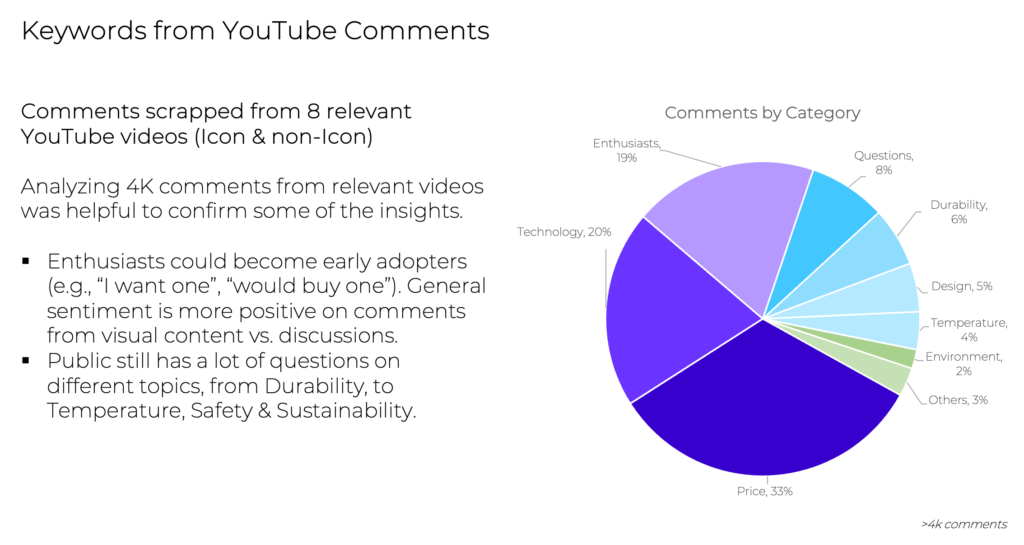
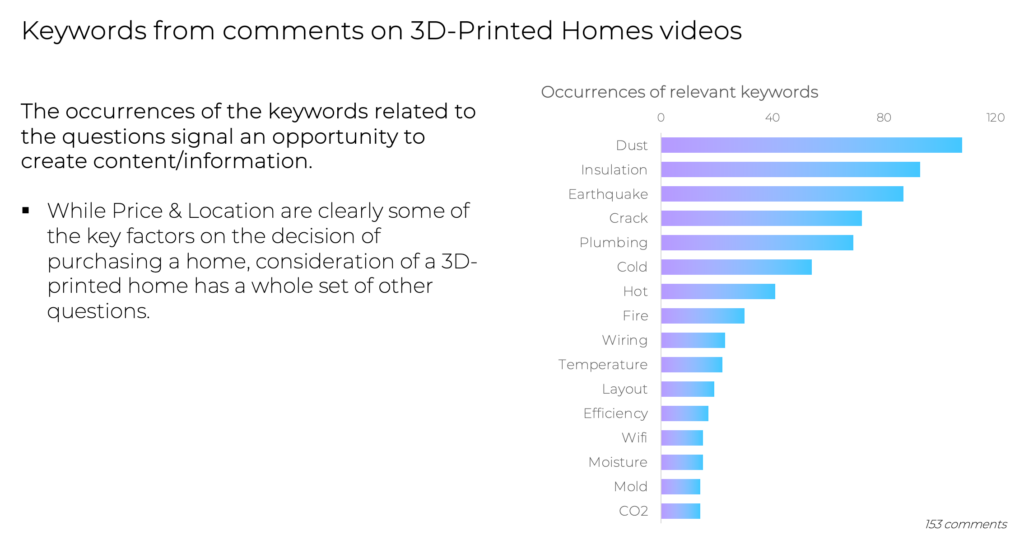
Are There Downsides to 3D-Printed Homes?
While the potential benefits are interesting, I also found some limitations worth considering:
- Availability – Right now, 3D-printed homes are mostly built as pilot projects or in limited areas. There aren’t many places where you can just go out and buy one.
- Newness of the Technology – Since 3D-printed homes haven’t been around for decades, there’s not a lot of long-term data on how they age.
- Material Trade-Offs – While Lavacrete is strong, some traditional materials like brick and wood have better insulation properties. There’s still work to be done to optimize for different climates.
Quick takeaways
- Independent from price & location, an educational component is needed to encourage adoption of 3D-printed homes.
- There is likely enough science & proof to answer many of the questions from the public, meaning that it is possible to address them with content & information (dust, temperature, mold, sustainability).
- Trust must be gained from customers, particularly on the earliest sales.
- While durability can be addressed, this will need some time to gain credibility, since there aren’t enough reviews & history of habited 3D-printed homes.
- Initial sales could be encouraged with special incentives such as extended warranty or even a buy-back program.
Some thoughts
- The GTM market model will be quite dependent on the sales model, relationship & responsibilities between the Home Builder & Icon.
- Tesla is controlling the product & experience; it is still not clear how much of the experience & product will be controlled by Icon. These could have a big impact on the marketing strategy.
- Tesla has been quite successful with marketing of scarcity, uniqueness and its features. Icon needs to be able to differentiate its homes vs. being a supplier of technology for homes built by X developer.
- A strategy to not spend on ads can work for Icon, but it has to look for ways to differentiate the purchase process from traditional homes.
- The buying and after-purchase process is a big part of the experience and if this is controlled mostly by the builder, it will be tougher to differentiate.
- Icon has to provide enough content & tools for developers, which still spend a lot of money in marketing, to change differentiate the marketing of Icon homes vs. their other developments.
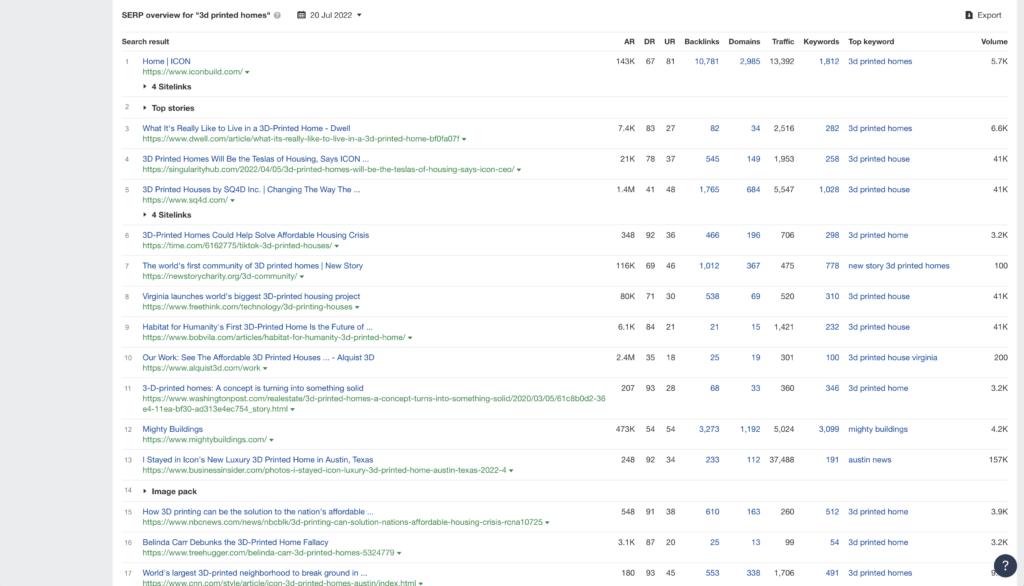
- Some of the videos by people who experienced the homes have gotten great feedback. More content is needed.
- E.g. Video “I stayed at ICON’s 3D printed concrete house in Austin!” by Belinda Car had high engagement since she touched some of the key areas of interest of customers.
- Encourage comments & discussions.
- Discussions create engagement & are part of creating a community.
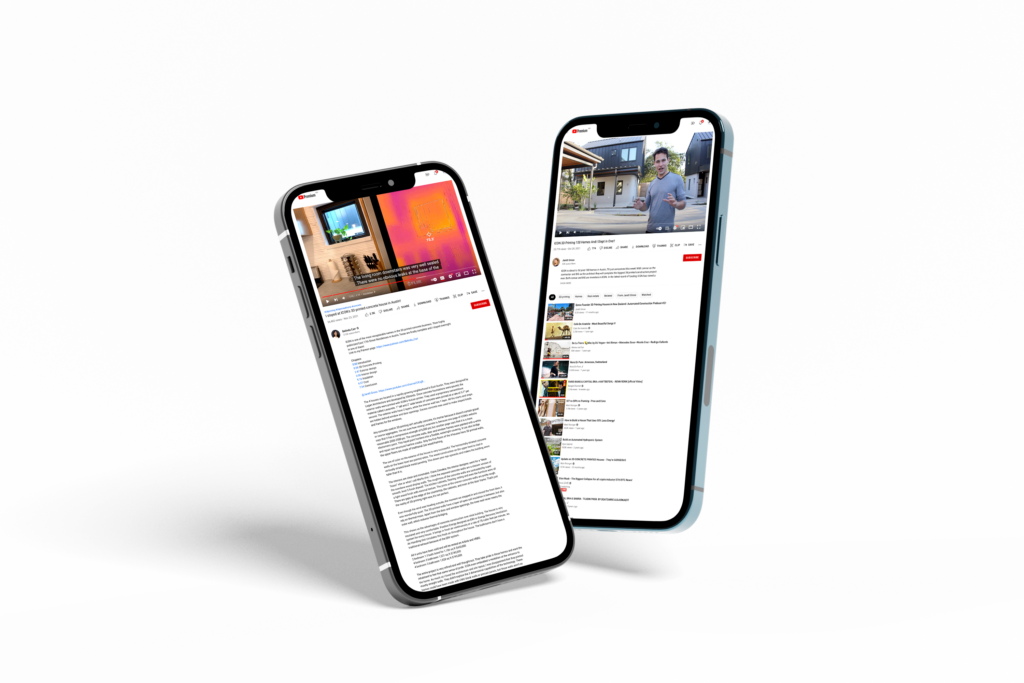
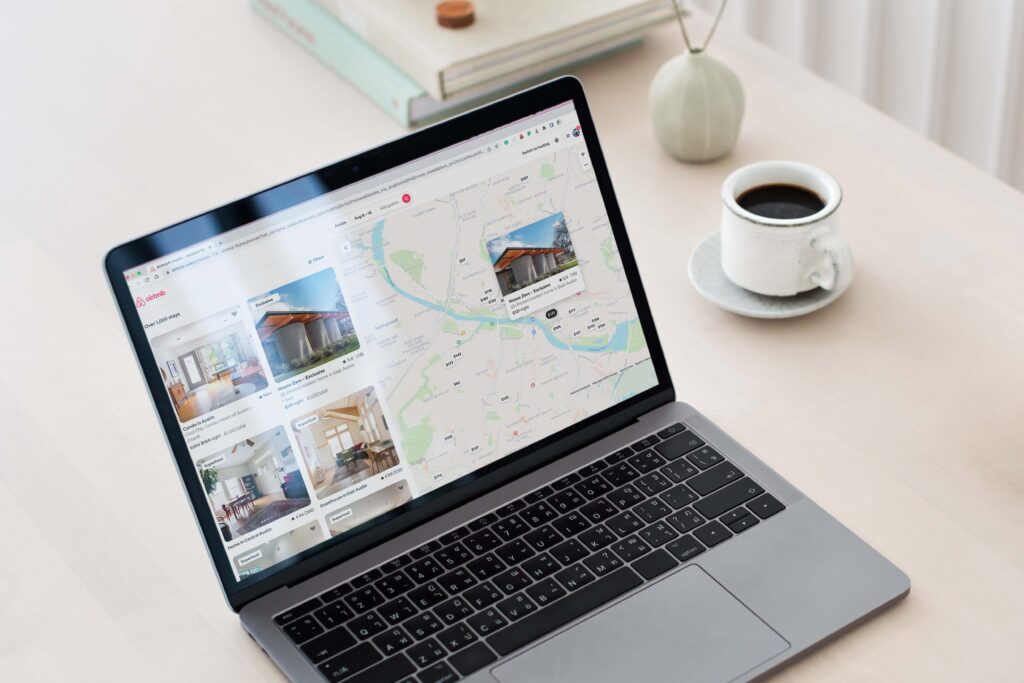
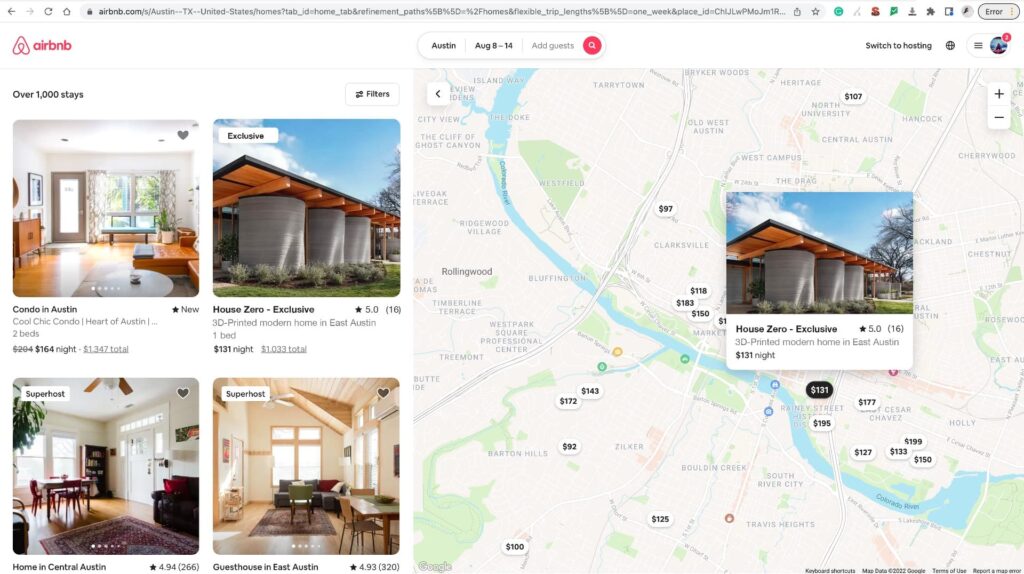
- The more people experience 3D-printed homes, the more tangible they become.
- This could be the way to continue to spread the word. Continue to invite influencers/journalists to experience them (as Icon has done already), as well as normal people who could become buyers)
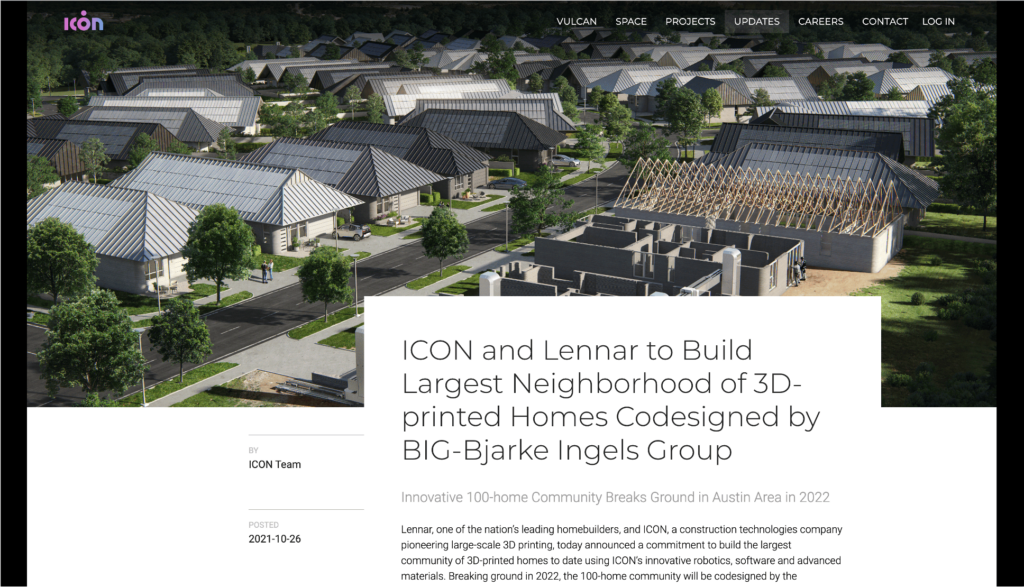
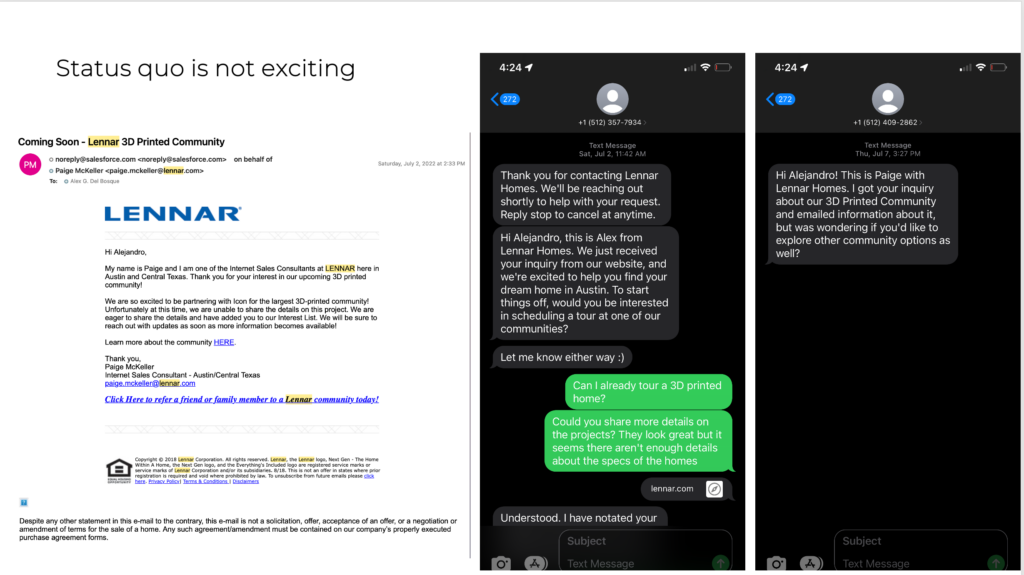
Final Thoughts: Should You Buy a 3D-Printed Home?
From what I found, 3D-printed homes are still in the early stages but are definitely a real option, not just a futuristic concept. ICON is actively building them, and they’re being used in places like Texas and Mexico. If you’re interested in:
✔ A home that’s built faster than usual
✔ A more efficient construction process with less waste
✔ Potential cost savings on structure
… then it might be something worth considering.
That said, if you’re concerned about long-term durability, resale value, or financing, it may be worth waiting until there’s more data and wider adoption.
This was just a quick research dive, and I’d love to hear from others who have looked into 3D-printed homes. Would you consider buying one? Let me know what you think!
If you want to learn more, check out ICON’s website to see some of the homes they’ve built.

